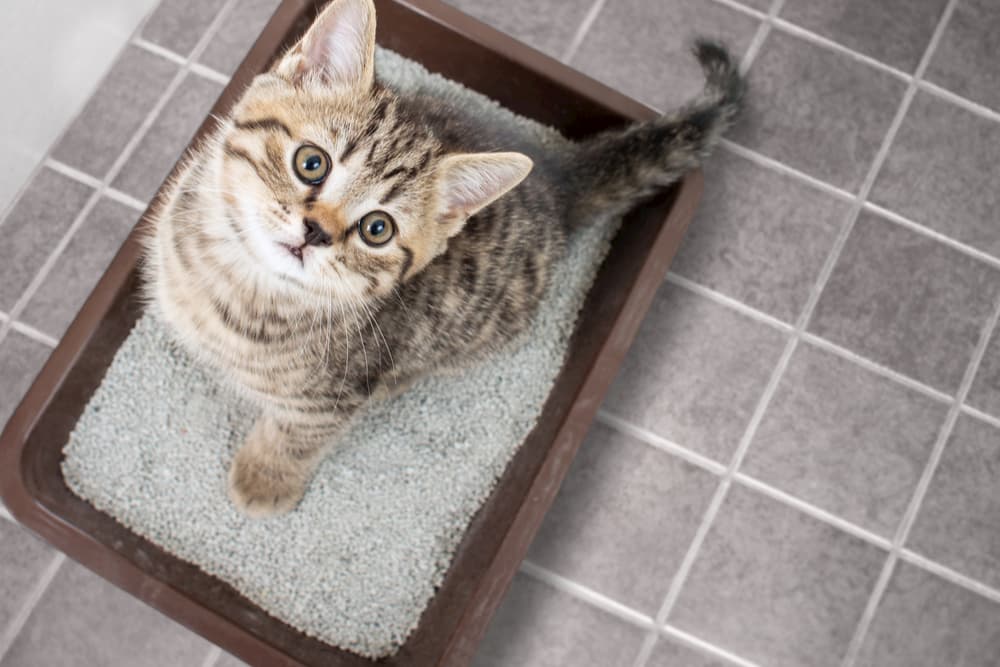Potential Risks of Flushing Cat Poop Down Your Toilet - Tips for Better Handling
Potential Risks of Flushing Cat Poop Down Your Toilet - Tips for Better Handling
Blog Article
We have noticed this post on How to Dispose of Cat Poop and Litter Without Plastic Bags down the page on the internet and believe it made perfect sense to discuss it with you on my blog.

Intro
As feline proprietors, it's important to be mindful of how we dispose of our feline close friends' waste. While it might seem hassle-free to purge cat poop down the toilet, this technique can have damaging repercussions for both the environment and human wellness.
Alternatives to Flushing
The good news is, there are more secure and more accountable methods to deal with pet cat poop. Consider the adhering to alternatives:
1. Scoop and Dispose in Trash
One of the most common approach of getting rid of cat poop is to scoop it right into a naturally degradable bag and toss it in the trash. Make certain to use a specialized litter scoop and dispose of the waste immediately.
2. Usage Biodegradable Litter
Choose eco-friendly cat trash made from products such as corn or wheat. These litters are environmentally friendly and can be securely dealt with in the trash.
3. Bury in the Yard
If you have a backyard, consider burying pet cat waste in a designated area away from veggie yards and water sources. Make sure to dig deep adequate to stop contamination of groundwater.
4. Install a Pet Waste Disposal System
Purchase a family pet garbage disposal system specifically developed for feline waste. These systems make use of enzymes to break down the waste, reducing odor and ecological effect.
Health and wellness Risks
Along with ecological concerns, flushing cat waste can likewise present wellness threats to humans. Cat feces may consist of Toxoplasma gondii, a bloodsucker that can create toxoplasmosis-- a possibly extreme illness, particularly for expecting ladies and individuals with weakened body immune systems.
Ecological Impact
Purging feline poop introduces damaging pathogens and bloodsuckers into the supply of water, presenting a substantial danger to water communities. These pollutants can adversely impact marine life and concession water high quality.
Final thought
Responsible pet dog possession prolongs beyond providing food and shelter-- it additionally includes correct waste management. By avoiding purging pet cat poop down the commode and opting for different disposal approaches, we can reduce our ecological impact and secure human wellness.
Why Can’t I Flush Cat Poop?
It Spreads a Parasite
Cats are frequently infected with a parasite called toxoplasma gondii. The parasite causes an infection called toxoplasmosis. It is usually harmless to cats. The parasite only uses cat poop as a host for its eggs. Otherwise, the cat’s immune system usually keeps the infection at low enough levels to maintain its own health. But it does not stop the develop of eggs. These eggs are tiny and surprisingly tough. They may survive for a year before they begin to grow. But that’s the problem.
Our wastewater system is not designed to deal with toxoplasmosis eggs. Instead, most eggs will flush from your toilet into sewers and wastewater management plants. After the sewage is treated for many other harmful things in it, it is typically released into local rivers, lakes, or oceans. Here, the toxoplasmosis eggs can find new hosts, including starfish, crabs, otters, and many other wildlife. For many, this is a significant risk to their health. Toxoplasmosis can also end up infecting water sources that are important for agriculture, which means our deer, pigs, and sheep can get infected too.
Is There Risk to Humans?
There can be a risk to human life from flushing cat poop down the toilet. If you do so, the parasites from your cat’s poop can end up in shellfish, game animals, or livestock. If this meat is then served raw or undercooked, the people who eat it can get sick.
In fact, according to the CDC, 40 million people in the United States are infected with toxoplasma gondii. They get it from exposure to infected seafood, or from some kind of cat poop contamination, like drinking from a stream that is contaminated or touching anything that has come into contact with cat poop. That includes just cleaning a cat litter box.
Most people who get infected with these parasites will not develop any symptoms. However, for pregnant women or for those with compromised immune systems, the parasite can cause severe health problems.
How to Handle Cat Poop
The best way to handle cat poop is actually to clean the box more often. The eggs that the parasite sheds will not become active until one to five days after the cat poops. That means that if you clean daily, you’re much less likely to come into direct contact with infectious eggs.
That said, always dispose of cat poop in the garbage and not down the toilet. Wash your hands before and after you clean the litter box, and bring the bag of poop right outside to your garbage bins.
https://trenchlesssolutionsusa.com/why-cant-i-flush-cat-poop/

As a reader on Don’t flush cat feces down the toilet, I imagined sharing that information was essential. Appreciated our piece? Please share it. Let others locate it. Thanks for your time. Please pay a visit to our site back soon.
Request An Estimate Report this page